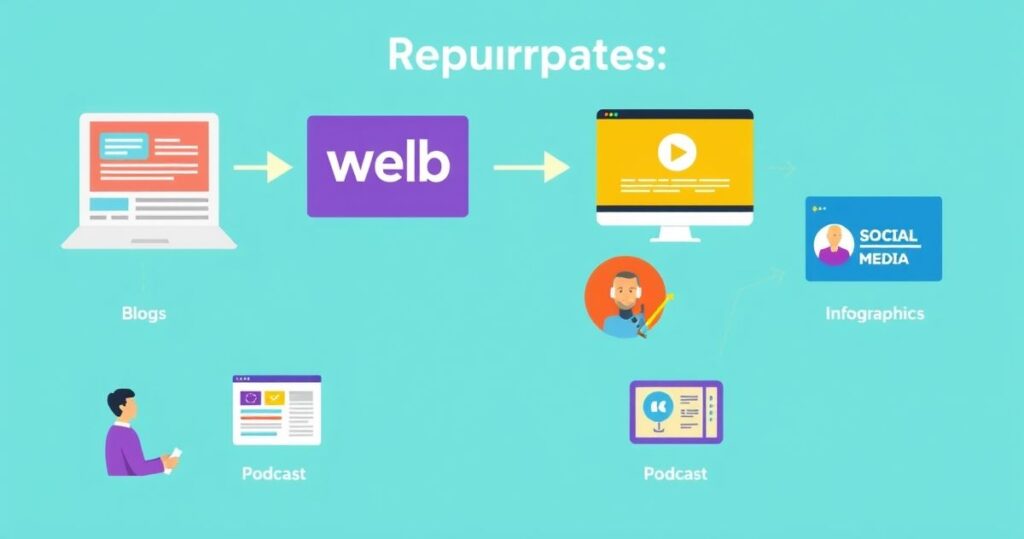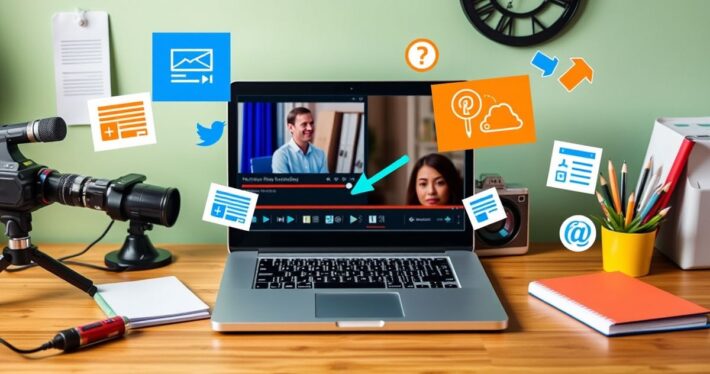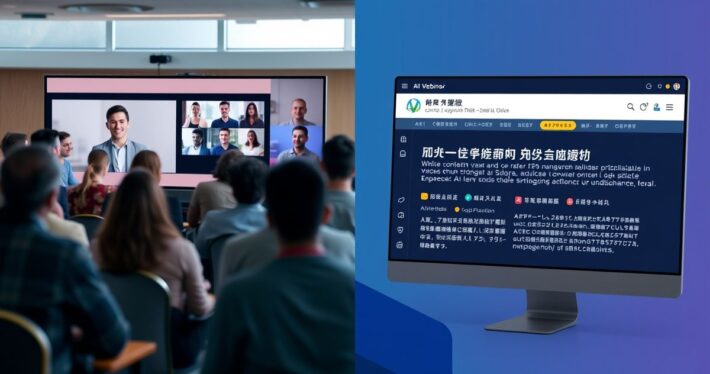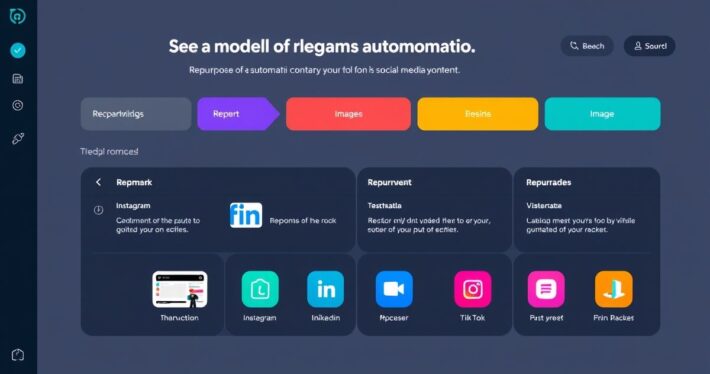How to turn a single webinar into 10+ pieces of evergreen content.

Creating a high-quality webinar is no small feat. You’ve poured hours into research, crafted engaging slides, and provided value to your audience. But why let all that effort go to waste after the live event? The truth is, a single webinar can be the gift that keeps on giving if you know how to repurpose it effectively.
In this guide, we’ll explore proven methods to turn one webinar into 10+ pieces of evergreen content that will continue to engage, educate, and convert your audience long after the live session ends. Whether you’re a seasoned marketer or just starting out, these strategies will help you maximize your ROI and build a content library that drives consistent results.
Why Repurpose Your Webinar?
Let’s be honest—most webinars are underutilized. They’re often treated as one-off events, even though they’re treasure troves of valuable content. Repurposing your webinar not only saves time and resources but also ensures your message reaches a wider audience. Plus, evergreen content keeps working for you 24/7, driving traffic, leads, and conversions over time.
Repurposing isn’t just about cutting corners; it’s about amplifying your impact. Think of your webinar as a central hub of knowledge. By breaking it down into smaller, digestible pieces, you can cater to different audience preferences—whether they prefer video, audio, or written content.
Now, let’s dive into the strategies.
1. Transform It into a Blog Post
One of the simplest ways to repurpose your webinar is by converting it into a blog post. Use the webinar transcript as your starting point (most webinar platforms provide this feature) and edit it for readability. Break the content into sections with clear headings, and add visuals like charts, graphs, or screenshots from the webinar.
Pro tip: Don’t just copy and paste the transcript. Optimize it for SEO by incorporating relevant keywords, adding internal links, and including a call-to-action (CTA) that drives readers to your lead magnet or product page.
2. Create a Series of Social Media Posts
Social media is the perfect platform to share bite-sized insights from your webinar. Break key takeaways into standalone posts, and pair them with eye-catching graphics or short video clips. Use a mix of formats, such as carousels, reels, or LinkedIn posts, to cater to different platforms.
For example, share a powerful statistic, a quote from the speaker, or a step-by-step tip that resonated with your audience. Don’t forget to include a link to the full webinar replay or related content.
3. Produce a Podcast Episode
If your webinar includes an engaging speaker or panel discussion, repurpose it into a podcast episode. Simply edit the audio to remove any dead air or irrelevant sections, and add an intro/outro that sets the stage for the episode.
Podcasts are especially effective for reaching audiences who prefer audio content during their commute or workout. Plus, you can syndicate the episode on platforms like Spotify, Apple Podcasts, and Google Podcasts to expand your reach.
4. Develop an eBook or Whitepaper
Take the insights from your webinar and expand them into a downloadable eBook or whitepaper. This works particularly well for in-depth or research-heavy topics. Use the webinar as the foundation, and add additional data, case studies, or expert quotes to enhance the content.
Offer the eBook as a lead magnet to grow your email list, or use it as a value-packed bonus for your paid offers.
5. Create a Video Series
Your webinar can easily be chopped into a series of short videos. For instance, each segment of the webinar could become its own video—introducing the topic, diving into actionable strategies, and concluding with a CTA.
Post these videos on YouTube, embed them in related blog posts, or use them as ads. Videos are highly engaging and can help you tap into the growing demand for video content.
6. Design an Infographic
Infographics are a visually appealing way to present data or key takeaways from your webinar. Use tools like Canva or Piktochart to create a shareable infographic that simplifies complex information.
Share the infographic on social media, include it in blog posts, or use it as part of your email marketing campaigns.
7. Write a LinkedIn Article
LinkedIn’s publishing platform is an excellent way to repurpose your webinar for a professional audience. Write a detailed article that summarizes the webinar’s key points or focuses on a specific aspect of the discussion.
This not only positions you as an industry expert but also drives engagement from LinkedIn’s highly targeted user base.
8. Build a Quiz or Assessment
Turn your webinar content into an interactive quiz or assessment. For example, if your webinar was about productivity, create a quiz titled “How Productive Are You Really?” Use the insights from the webinar to craft questions and provide personalized results.
Quizzes are highly shareable and can be used to capture leads or guide users toward your products or services.
9. Develop a Checklist or Cheat Sheet
Audiences love actionable, easy-to-follow resources. Take the steps or strategies shared in your webinar and turn them into a checklist or cheat sheet. For instance, if your webinar was about email marketing, create a “10-Step Email Marketing Checklist.”
These resources are incredibly valuable for your audience and can be used as lead magnets or bonus content.
10. Host a Live Q&A or Follow-Up Session
Use your webinar as a springboard for additional engagement. Host a live Q&A session on social media or via email to address unanswered questions or delve deeper into the topic.
This keeps the conversation going and positions you as a responsive and knowledgeable expert.
Real-World Example: How Company X Repurposed Their Webinar
Let’s look at a real-world example. Company X hosted a webinar on “Social Media Trends for 2024” and repurposed it into:
- A blog post summarizing the top 5 trends
- A series of LinkedIn posts highlighting each trend
- A podcast episode featuring the speaker’s insights
- An eBook with additional case studies and examples
- A YouTube video series breaking down each trend
- An infographic visualizing the data
- A quiz titled “Which Social Media Trend Should You Focus On?”
- A checklist for implementing the trends
- A live Q&A session to address audience questions
- An email sequence nurturing leads with webinar highlights
The result? Their content library grew exponentially, their reach expanded, and they saw a 30% increase in lead generation—all from a single webinar.
Overcoming Common Challenges
Repurposing content isn’t without its challenges. You might worry about redundancy or feel overwhelmed by the workload. Here’s how to tackle these issues:
- Redundancy: Focus on adding value. Each piece should offer a unique perspective or format.
- Workload: Use tools like AI-powered webinar creation platforms to automate tasks like transcript generation or slide outline creation.
Final Thoughts
Repurposing a single webinar into 10+ pieces of content isn’t just a smart strategy—it’s essential for maximizing your efforts and staying relevant in today’s content-saturated market. By following these steps, you’ll not only save time but also create a content ecosystem that drives consistent results.
So, what are you waiting for? Dust off that webinar recording, and start turning it into a goldmine of evergreen content.



